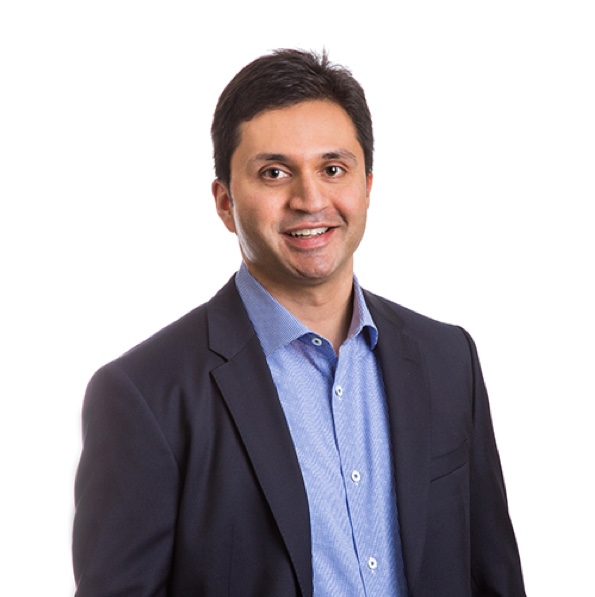Or listen in your favorite podcast app
Apple Podcasts / Google Podcasts / Spotify
When Netskope CEO and founder Sanjay Beri left his role with well-known Juniper Networks, he knew the internet and the way that we protected ourselves virtually was changing. The issue is that while Sanjay knew companies needed to leave their old security tactics behind, convincing members of the C-Suite that they needed to invest in new security measures is a very difficult task. So he showed them why.
“Without them telling us anything, we basically uncovered all their shadow IT, all their data that was being filtered not by malicious people, but by their own employees who just didn’t know better,” he said. “It’s so apparent that people don’t know where their data is and by showing them where their data is they realize how exposed they really are.”
Sanjay is working to make security more proactive, less reactive, and more educational via his new venture with Netskope. On this episode of IT Visionaries, Sanjay discusses how companies can uplevel their security techniques, why SaaS applications are leaving your data unprotected and exposed in areas you might not realize, and why it’s time security companies start educating their peers on best practices.
Main Takeaways
- Lost in Translation: Every 10 to 15 years, the language of the internet changes. As that happens, your SaaS application must change with it. Software that is 15 years old, is unable to understand the new intricacies of the internet, which leaves companies and users vulnerable to various threats.
- Living on the Edge: Your security needs to live where your employees reside — which recently is at the edge — so that no matter where employees work, your system is there to protect them. With so many employees working remotely in 2021, most of a company’s data and documents are living in the cloud, even if your company is not cloud-native, so necessary security needs to be put in place to protect it.
- Here to Educate and Protect: Security teams have a responsibility to not only protect their end-users, but they also must be educating the end-users on why and how they are putting themselves at risk. The purpose of this educational philosophy is so that users can understand the risks once they have been briefed, and you can then take action to minimize risk.
—–
For a more in-depth look at this episode, check out the article below.
When Netskope CEO and founder Sanjay Beri left his role with well-known Juniper Networks, he knew the internet and the way that we protected ourselves virtually was changing. The issue is that while Sanjay knew companies needed to leave their old security tactics behind, convincing members of the C-Suite that they needed to invest in new security measures is a very difficult task. So he showed them why.
“Without them telling us anything, we basically uncovered all their shadow IT, all their data that was being filtered not by malicious people, but by their own employees who just didn’t know better,” he said. “It’s so apparent that people don’t know where their data is and by showing them where their data is they realize how exposed they really are.”
Sanjay is working to make security more proactive, less reactive, and more educational via his new venture with Netskope. On this episode of IT Visionaries, Sanjay discusses how companies can uplevel their security techniques, why SaaS applications are leaving your data unprotected and exposed in areas you might not realize, and why it’s time security companies start educating their peers on best practices.
Beri launched Netskope with an eye toward redefining how companies view their security apparatus. According to Beri, companies and security teams spend close to $30 billion a year on data network security, which includes security items such as firewalls, getaways, proxies and data loss systems, which are all boxes that reside within a companies technology stack. But the problem is, those systems don’t protect users from how they are accessing their networks today, which is mostly via the cloud.
“It’s the biggest market insecurity,” Beri said. “There’s two problems with that market. The world has moved on, meaning 67% of people work remotely and people don’t want to go back and VPN to their corporate network. They want to go straight to the internet and straight to the cloud. So the location of those boxes are wrong and it’s forcing inefficiencies, performance problems, and too much expense. So people said,I don’t want these boxes in my perimeter. I want this edge in the cloud where no matter where I am I have great fast access to my resources…So this concept of Netskope is to put your security where you want to in the virtual edge, so no matter where people work, it’s there.So you can set and protect your data in a much better way.”
The second issue that Beri zeroed in on was that every 10-15 years, the dialect of the internet changes. When that happens, it’s critical to update your software so that it is able to understand all the new code and language being used.
“Every 10 years, maybe 15, the language of the internet changes,” he said. “It’s all about application identification. The reality is that what has happened is now the world and the language of the internet is APIs. That’s how applications are built and that’s how the internet is built. As a result, all of those systems that you spend on sit in the wrong location, they don’t understand the language.”
The way Beri and Netskope have up-leveled modern security begins at the transactional level. So when users want to upload a document to Dropbox, or drop a file in their company’s Slack channel, their system then identifies what type of data is stored in that document, or if that particular document needs a certain level of clearance, or contains security information that might be damaging. It’s a new way to operate that protects companies while giving their employees the freedom to operate from any environment.
“When you think about us and you think about the reality of an enterprise today, the average enterprise has over 1,000 SaaS applications,” Beri said. “95% of [SaaS applications] are not owned by IT. So, they never will be. The reality is if you’re a CIO or CTO or CSO, you have to realize you live in a world now where your business units and your end-users, in many cases, choose what applications and services you’re using.”
Because companies across the world utilize so many SaaS applications, Beri said security system focus needs to shift to how companies can effectively and securely operate within that environment, while still protecting their data and their users. What Netskope does is identify what applications an organization is using, how their employees are using those applications, and they try to understand how Netskope can effectively put up guardrails while not ruining their employee experience.
“We spent years just refining the ability to detect sensitive data with an image because that’s what attackers want,” he said. “We feel good protecting healthcare institutions who are subject to some of the most twisted people in the world who try to take advantage of people during this time, retail institutions, online retail, financial institutions.”
Beri admitted you can develop some of the best security systems in the world, but they won’t make a difference if you can’t get companies to understand how they are exposing themselves in different ways through these applications. So, he did what any good security company does, he showed them where they were vulnerable.
As the conversation closed, Beri stressed he would love to see security teams begin educating their users more on how their actions open themselves up to possible threats and then coach them on how they can do the right thing.
“Security shouldn’t be the thing that stops you,” he said. “It should be the thing that protects you and then educates your end-users to become better so they don’t put you more at risk. When they do put you at risk, security is there to catch them and then coach them again. So it’s got to be this iterative thing because ultimately your users, they’re your weakest point but they’re also the fabric of the company.”
—
To hear the entire discussion, tune into IT Visionaries here.





